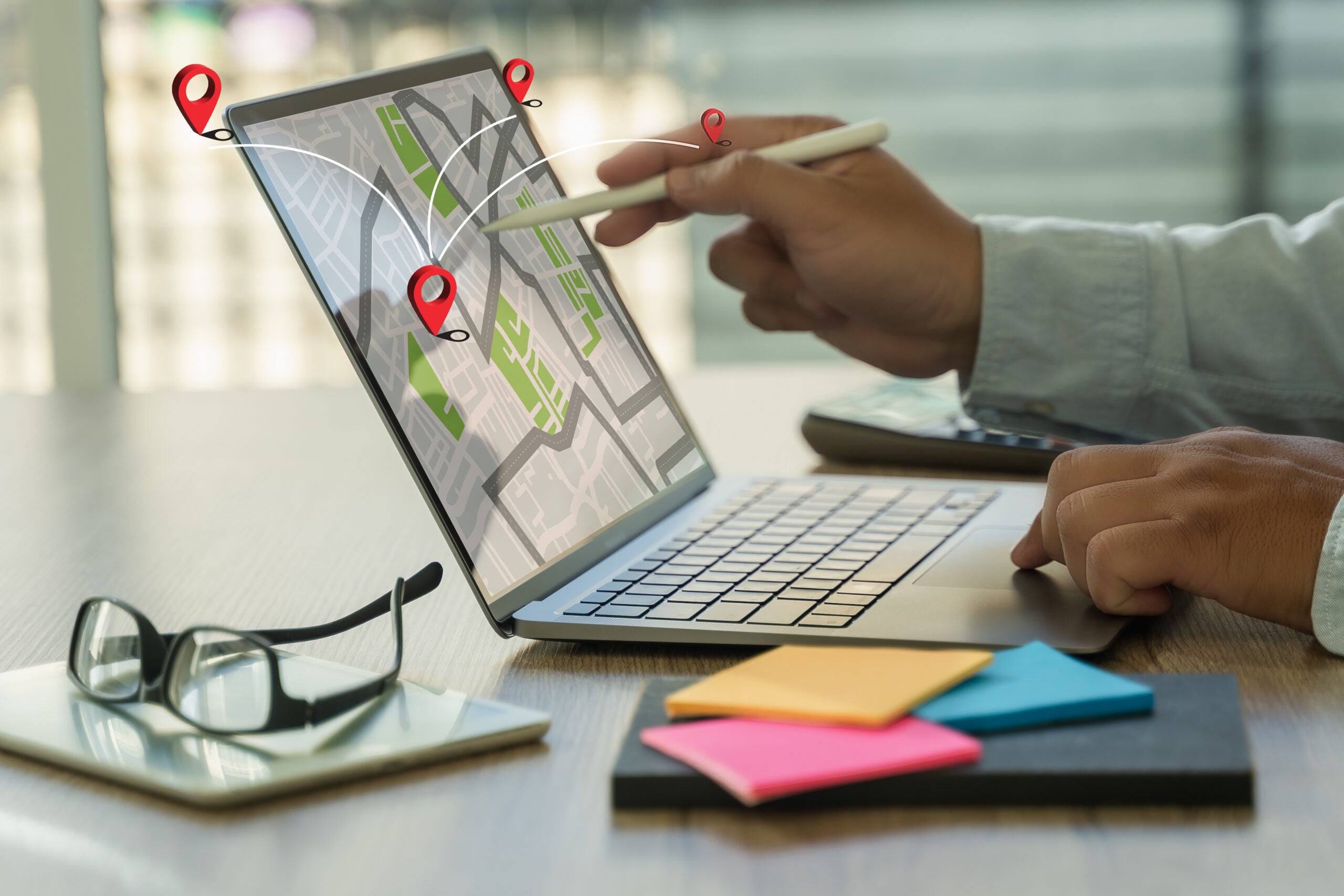How Delivery Route Software Drives Innovation in Logistics
By: Luke Britton

In modern commerce, logistics is the lifeline that keeps businesses thriving. It’s all about the delicate art of seamlessly moving goods from one place to another, maintaining a balance between supply and demand. Amidst this lies robust delivery route software for dynamic routing needs—a device quietly reforming logistics by optimizing routes and limiting inefficiencies.
This software isn’t just a technical solution; it’s a transformative force. By seamlessly blending data analytics and real-time tracking, it simplifies complex logistical challenges. It optimizes routes by analyzing several factors, for example, traffic patterns, delivery priorities, and vehicle capacities, ensuring the most efficient routes are taken.
But beyond the technicalities, there’s a human component. It’s about businesses striving to deliver more than just products—it’s about delivering promises to customers, building trust, and fostering long-lasting relationships. Join us as we delve deeper into how delivery route software is driving the heartbeat of businesses forward.
Evolution of Logistics with Technology
Logistics has been the silent engine driving business, yet traditional methods often hit roadblocks. Manual planning, paper-based records, and guesswork led to inefficiencies and delays. Nonetheless, the beginning of innovation denoted a seismic change in strategies.
Enterprising minds recognized the innovation potential, paving the way for technology driven solutions. From the advent of barcode scanning to the rise of GPS tracking, each innovation brought a quantum leap in efficiency and accuracy. Out of nowhere, what once appeared to be incomprehensible turned into a minor impediment on the way to success.
Today, sophisticated algorithms and artificial intelligence algorithms optimize routes, predict demand, and mitigate risks in real time. The shift from pen and paper to cloud-based platforms has made logistics a strategic asset instead of a cost center. This evolution highlights a pivotal truth: in the consistently advancing dance of the organic market.
Key Features of Modern Delivery Route Software
Modern delivery route software comes furnished with a set-up of essential features intended to reform logistical operations:
- Real-Time Tracking: Real-time tracking capabilities permit organizations to consistently monitor their fleet’s movements, providing significant insights into driver behavior and optimizing overall performance. This improves delivery accuracy and enables timely interventions in the event of any unexpected events.
- Dynamic Routing: By dynamically adjusting routes in light of changing conditions such as gridlock or new delivery requests, modern delivery route software ensures that drivers are always taking the most efficient path to their destinations. This spryness saves time and assets as well as empowers organizations to adjust rapidly to unforeseen circumstances.
- Route Optimization: Advanced route optimization algorithms consider different variables like traffic designs, delivery windows, and vehicle capacities to make the most efficient delivery schedules possible. Minimizing unnecessary delays not only reduces fuel consumption and vehicle wear and tear but also boosts productivity.
- Customer Communication: Automated customer communication features keep clients informed about their delivery status continuously, giving updates on estimated arrival times and any likely delays. This proactive approach not only improves consumer loyalty but also reduces the burden on customer service teams by proactively addressing inquiries.
- Analytics and Reporting: Powerful analytics and reporting tools enable businesses to analyze key performance metrics such as delivery times, driver performance, and fuel efficiency. By recognizing trends and areas for improvement, companies can optimize their operations and drive greater efficiency and cost savings over time.
- Integration Capabilities: Seamless integration with existing systems, like ERP and CRM, ensures that all data is centralized and accessible across the organization. This not only gets rid of data silos, but it also makes processes easier to follow, increases visibility overall, and encourages collaboration between various departments.
- Mobile Accessibility: Drivers are given direct access to essential route information, updates, and navigation tools via mobile-friendly interfaces on their smartphones or tablets. This not only improves communication and coordination between drivers and dispatchers but also enhances overall flexibility and responsiveness in the field.
In today’s dynamic market, these features enable businesses, especially those running an eCommerce business, to improve efficiency, streamline operations, and stay ahead.
Benefits of Delivery Route Software
Implementing delivery route software offers plenty of advantages that essentially influence a business’s primary concern and consumer loyalty levels:
1. Cost reduction
- Optimized routes limit fuel utilization and diminish vehicle mileage, prompting lower operational expenses.
- Efficient resource utilization brings about fewer inactive hours and extra time costs for drivers, further trimming operational costs.
- Reduced missed or late deliveries mitigated costly penalties and fines, guaranteeing financial savings.
2. Efficiency improvement
- Dynamic routing capabilities adapt to real-time changes, for example, traffic congestion or new delivery requests, guaranteeing ideal and efficient deliveries.
- Streamlined processes, such as automated route planning and scheduling, save significant time for employees to focus on higher-value tasks.
- Improved visibility into fleet operations allows for better decision-making and resource allocation, maximizing overall efficiency.
3. Customer satisfaction enhancement
- Accurate ETAs and proactive communication keep customers informed through the delivery process, which builds trust and loyalty.
- On-time deliveries and limited errors bring about happier customers and fewer complaints, at last reinforcing the brand’s reputation.
- Personalized delivery options, such as flexible time slots or route customization, take care of individual client inclinations, enhancing overall satisfaction.
Thus, delivery route software catalyzes operational excellence, driving cost savings, efficiency gains, and raised client encounters in today’s dynamic marketplace.
Driving Innovation through Delivery Route Software
Delivery route software is not just a tool for streamlining logistics; it’s a catalyst for innovation in the way businesses manage their supply chains. Through features like dynamic routing, real-time tracking, and predictive analytics, companies can pioneer new strategies and practices that drive efficiency and competitiveness.
1. Dynamic routing
The software empowers on-the-fly adjustments to delivery routes because of real-time data, enhancing effectiveness and responsiveness. It adjusts to changing circumstances, such as traffic or new delivery requests, guaranteeing streamlined operations. The powerful capabilities engage organizations to satisfy client needs quickly and effectively, eventually enhancing overall satisfaction and loyalty.
2. Real-time tracking
It ensures real-time visibility into the status of deliveries and provides constant monitoring of the movements of the fleet. This ability takes into consideration the brief distinguishing proof of bottlenecks and issues, working with proactive mediation to keep up with optimized operations and minimize disruptions.
3. Predictive analytics
It offers valuable insights into future demand trends and customer behavior. Armed with this foresight, businesses can proactively anticipate needs, strategically optimize inventory management, and efficiently assign resources to fulfill demand fluctuations. This proactive approach assists businesses to stay agile and responsive in today’s competitive market.
4. Innovative strategies and practices
Examples such as dynamic routing, real-time tracking, and predictive analytics facilitate innovative approaches to logistics management, boosting efficiency and competitiveness. These strategies engage businesses to spearhead new strategies, improving their operational effectiveness and standing in the market.
5. Staying ahead of competition
By optimizing delivery times, cutting costs, and increasing customer satisfaction, businesses that make use of delivery route software can keep up with their rivals. Proactively adjusting to changing business sector elements guarantees resilience and agility in a quickly developing business scene.
By leveraging these capabilities, businesses can stay ahead of the competition and adapt to changing market dynamics more effectively.
Final Thoughts
In conclusion, delivery route software remains a foundation of innovation in modern logistics, reshaping how organizations work and contend. We’ve explored how this technology enables companies to optimize routes, enhance efficiency, and elevate customer satisfaction. The significance of dynamic routing, real-time tracking, and predictive analytics in revolutionizing logistics management is one of the most important takeaways.
As businesses keep on utilizing these tools and strategies, they stay ahead of the opposition as well as adjust consistently to changing business sector elements. In essence, delivery route software isn’t simply an answer; it’s a driving force behind operational excellence and strategic growth in the steadily advancing world of logistics.
766 Views












